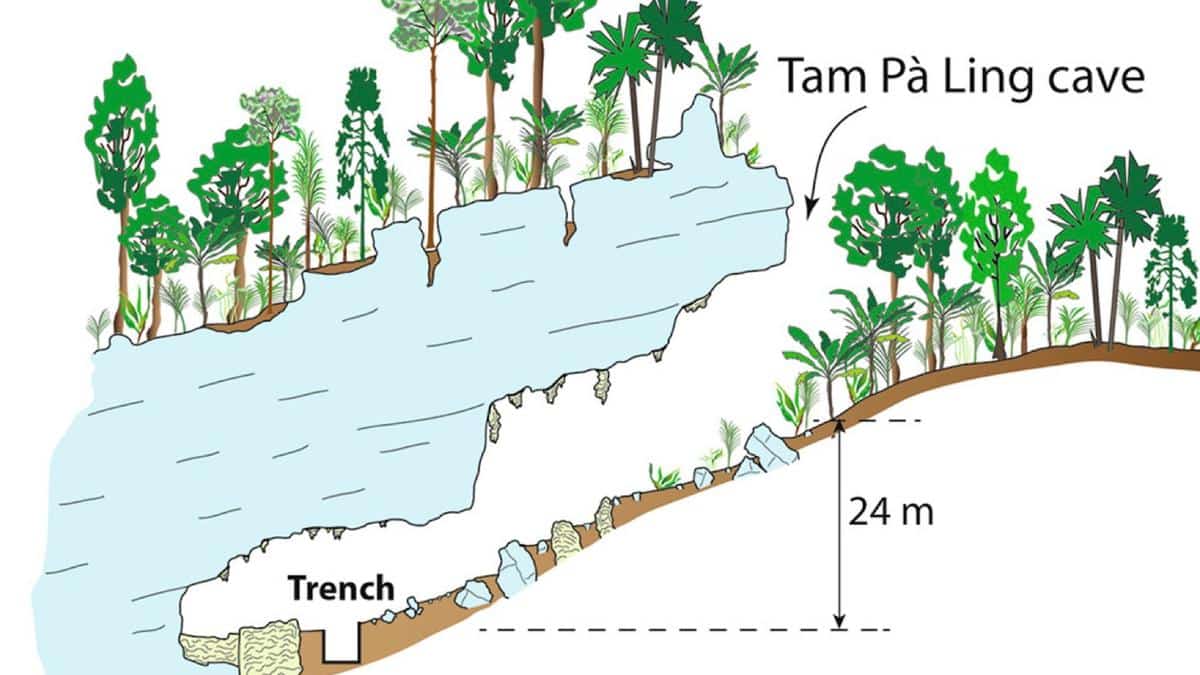Key findings:
- It revealed that humans were present in the vicinity of Tam Pà Ling Cave for roughly 56,000 years.
- It also confirmed that, far from reflecting a rapid dump of sediments, the site contains sediments that accumulated steadily over some 86,000 years.
- The age of the lowest fossil, a fragment of a leg bone found seven metres deep, suggests modern humans arrived in this region between 86,000 and 68,000 years ago.
- Even researchers found a tooth some 150,000 years old belonging to a Denisovan.
- This suggests the site may lie on a previously used dispersal route among hominins.
Key Facts about Tam Pà Ling Cave
- It is a sloping cave situated high in the Annamite mountain range in Northern Laos.
- The stratigraphy of the site indicates formation by periodic slopewash deposition from the muddy slope at the entrance of the cave.
Who are Denisovans?
- They are extinct human relatives otherwise known only from remains found in Siberia and Tibet.
- They lived lakhs of years ago, coexisting with Neanderthals in some regions, and interbreeding with early modern humans in some cases.
- They were first identified as a separate species in 2010, following the discovery of a fragment of a finger bone and two teeth, dating back to about 40,000 years ago, in the Denisovan Cave in Siberia.
Q1) Who are Neandertals?
Neandertals were a group of archaic humans who lived in Eurasia between approximately 400,000 and 40,000 years ago. They are named after the Neander Valley in Germany, where the first Neanderthal remains were discovered in 1856 and are considered a distinct species within the Homo genus.
Last updated on June, 2025
→ UPSC Notification 2025 was released on 22nd January 2025.
→ UPSC Prelims Result 2025 is out now for the CSE held on 25 May 2025.
→ UPSC Prelims Question Paper 2025 and Unofficial Prelims Answer Key 2025 are available now.
→ UPSC Calendar 2026 is released on 15th May, 2025.
→ The UPSC Vacancy 2025 were released 1129, out of which 979 were for UPSC CSE and remaining 150 are for UPSC IFoS.
→ UPSC Mains 2025 will be conducted on 22nd August 2025.
→ UPSC Prelims 2026 will be conducted on 24th May, 2026 & UPSC Mains 2026 will be conducted on 21st August 2026.
→ The UPSC Selection Process is of 3 stages-Prelims, Mains and Interview.
→ UPSC Result 2024 is released with latest UPSC Marksheet 2024. Check Now!
→ UPSC Toppers List 2024 is released now. Shakti Dubey is UPSC AIR 1 2024 Topper.
→ Also check Best IAS Coaching in Delhi
























